Paddleboarding is a sport that appears to be growing year after year.
With new people getting into the sport each day, the recreational paddlers who head out for a gentle adventure and experienced paddleboarders finding new uses for the boards and pushing the boundaries of what is capable on SUP.
it goes without saying that whichever category you fall under, you will at some point have fallen off and kicked your board in what seemed like miles in the opposite direction.
Fortunately paddleboards come with leashes and a means of fixing that leash to the board.
Paddleboards are equipped with what is known as a leash plug, this can be a recessed plastic cup with a metal bar across or it can be as simple as a metal loop fixed to the board.
Most paddleboard leashes are fixed using a leash tie which is normally made of nylon, budget paddleboards often don’t use a leash tie and you can simply velcro the leash to the board.
I will cover both methods in this article to ensure whichever board you have you know exactly how your leash should be attached.
How to Attach a Leash Tie to a Stand Up Paddleboard
To attach a leash to your paddleboard you will first need to tie the leash tie to the leash plug.
The Leash tie is approximately 10 inches in length and made of nylon, to tie this you will want to hold both ends of the nylon together.
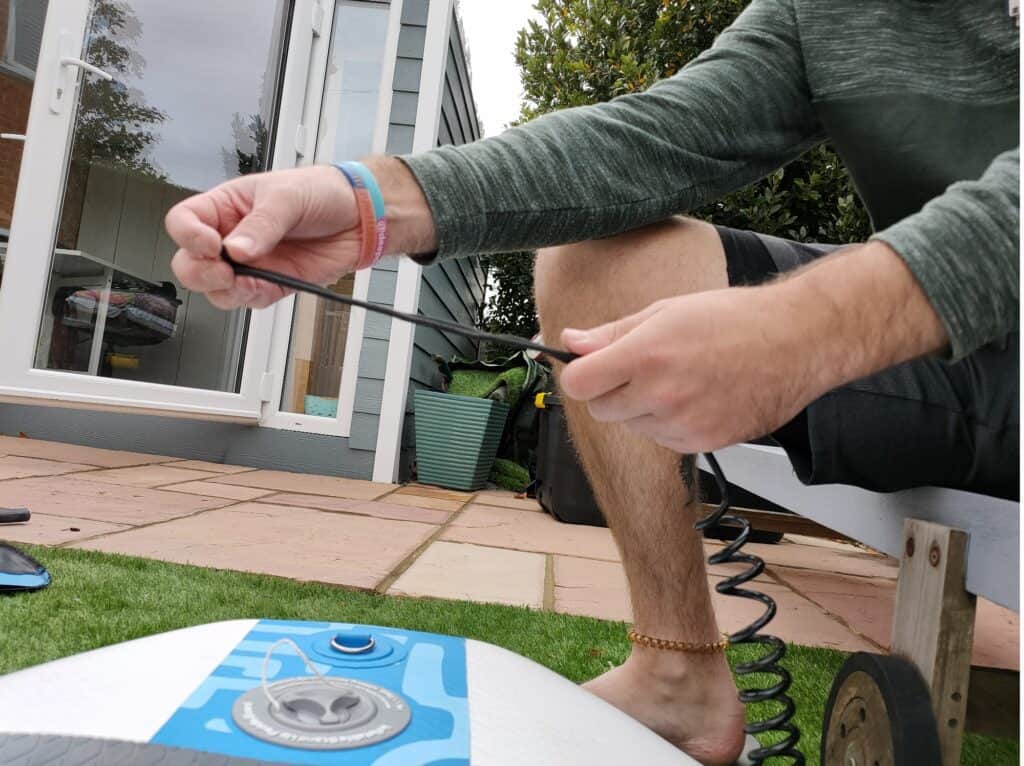
Then tie these ends in an overhand knot.
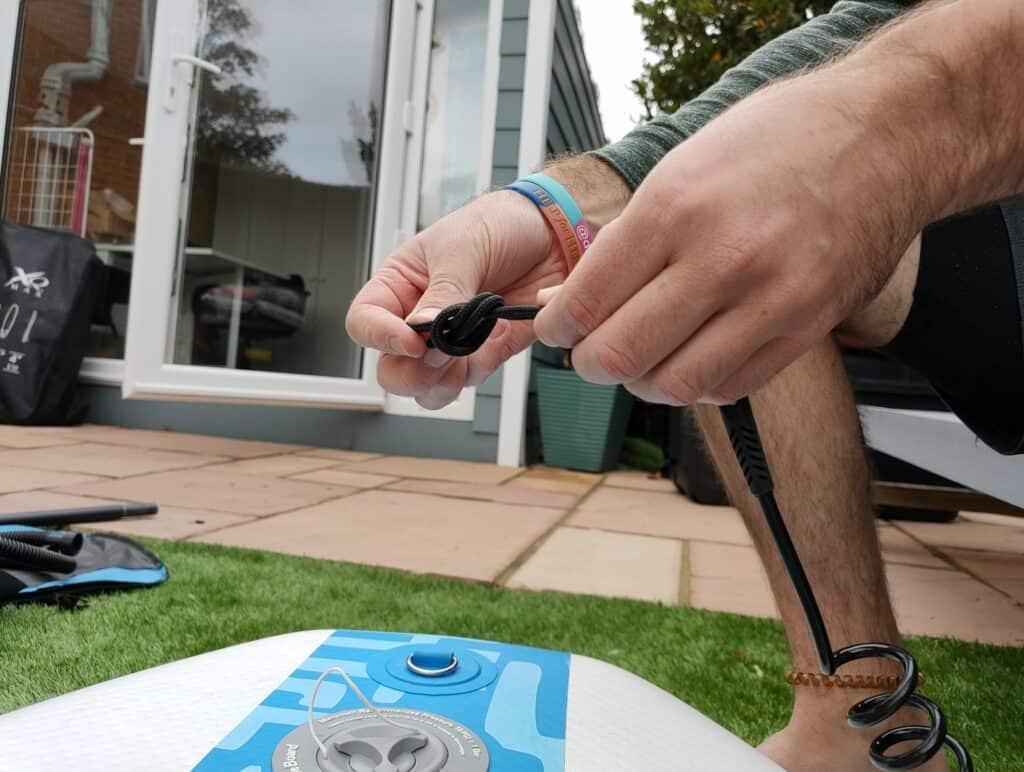
Try and get the knot as near to the end of the leash tie as possible and then feed the tie through the leash plug.
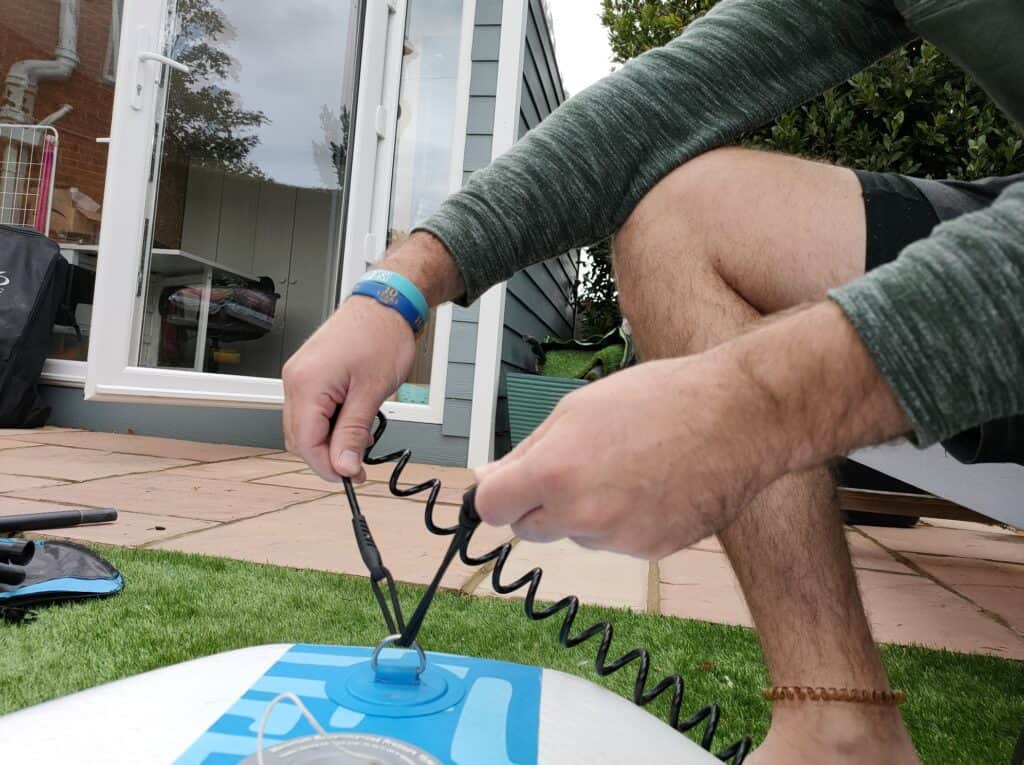
Once the tie is fed through the plug, pull the knot through the loop around the metal loop or bar in the leash plug and pull tightly.
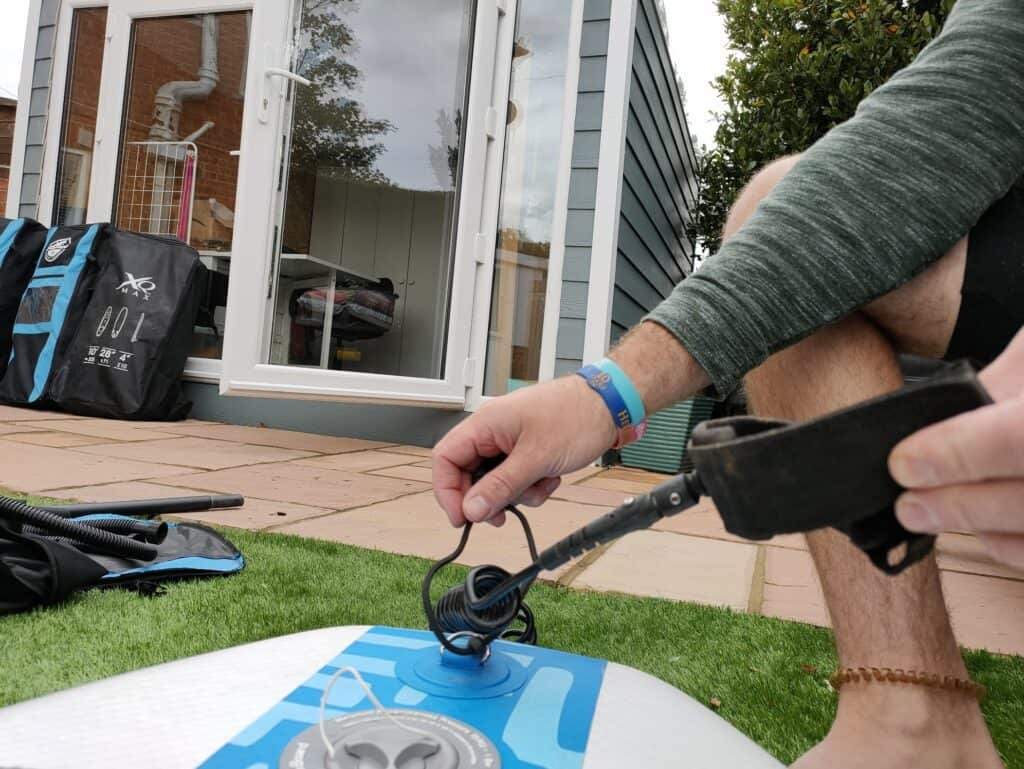
On this particular board the leash has a built in leash tie support. on traditional leash types it will contain a 3 part velcro secure around the least tie. Hence why in this photo you are seeing me pull the leash through the loop rather than securing with velcro.
If your leash does have the velcro securing system use the below method to secure the leash to the tie.
How To Attach Velcro Leash to Paddleboard
As noted above this is a trend I tend to see on more budget Paddleboards. I am not entirely sure why this is the case as I can’t imagine the small section of nylon costs that much and it is certainly the best method to secure your leash.
With that being said let’s get into how to fix a leash directly to a paddleboard that doesn’t have a leash tie.
This one is actually rather simple, you will normally find that the paddleboard has a metal loop that protrudes the board.
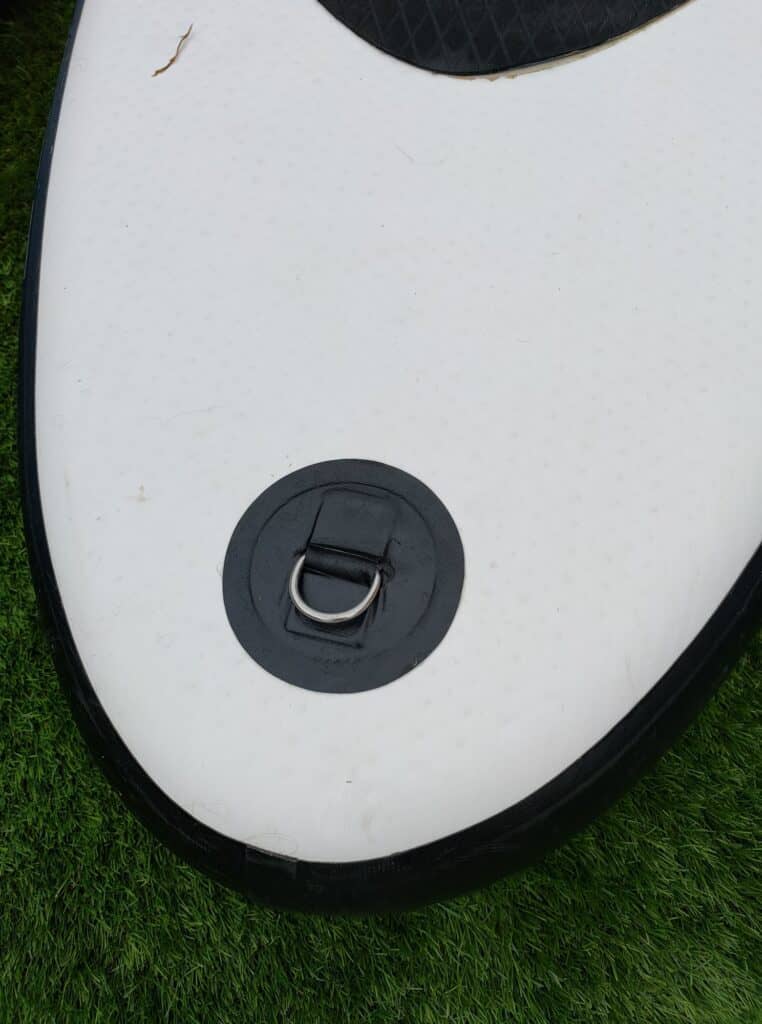
Un-velcro the bottom of the leash (this is normally three velcro sections) and when you have opened up the velcro sections you will normally find a slither or material between the 2nd and 3rd strip.
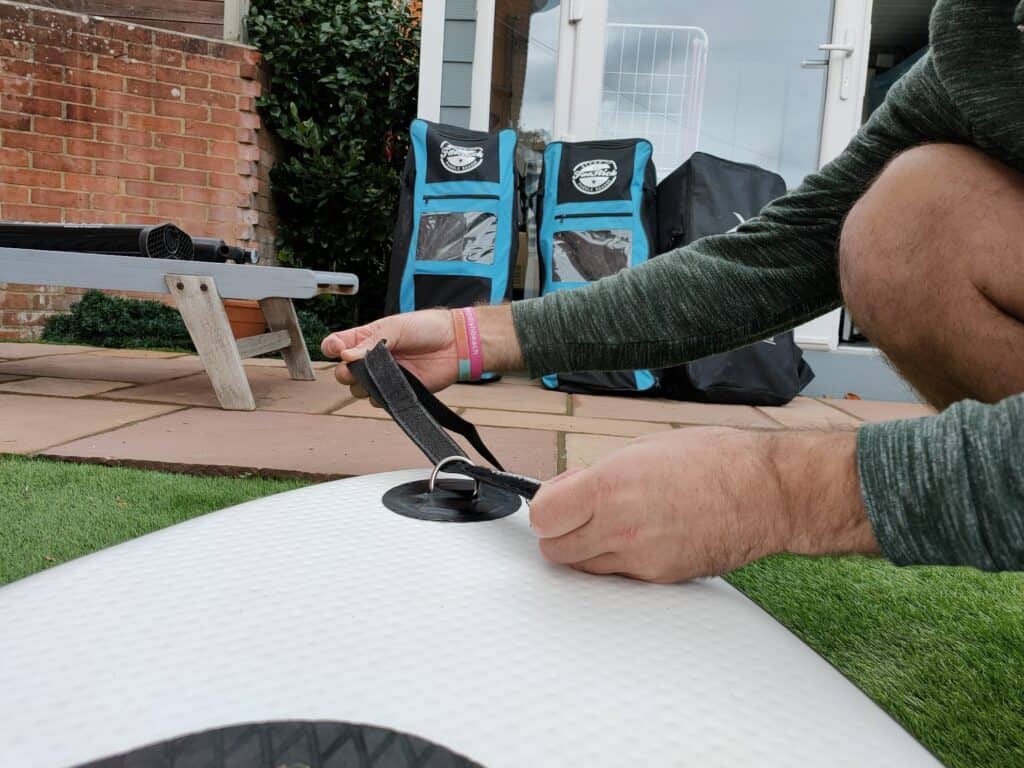
This slither of material is what rests against the metal loop, feed the velcro sections through the loop and seal the velcro around the metal loop.
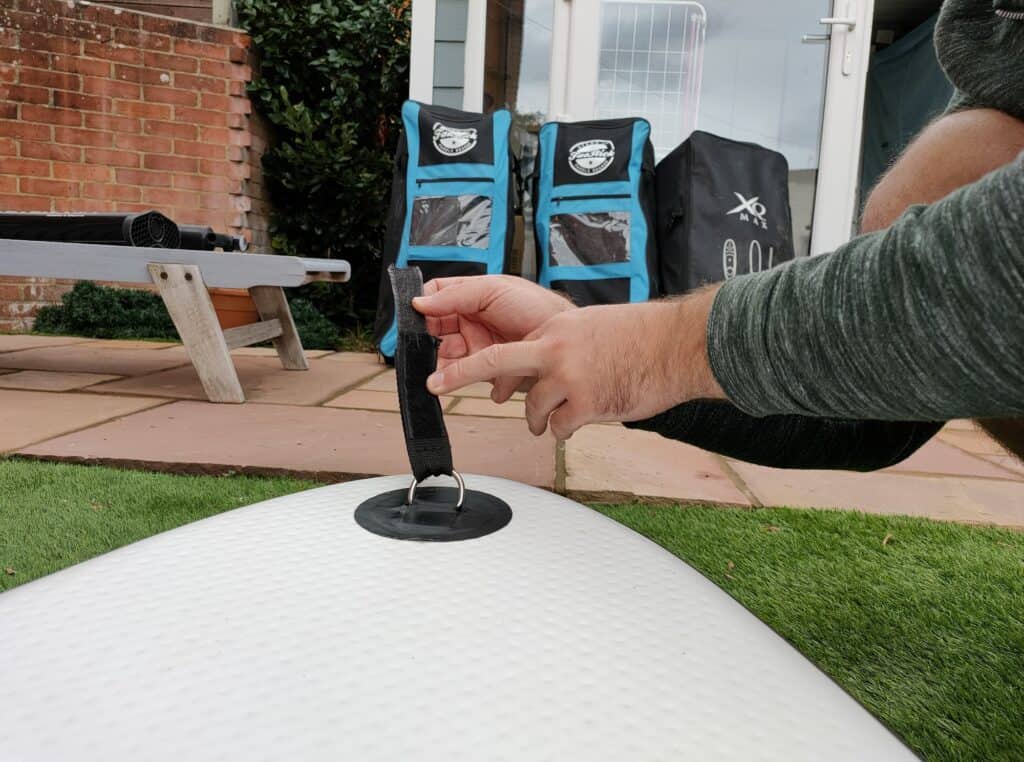
Secure the last velcro section to ensure the leash is tightly secured to the board.
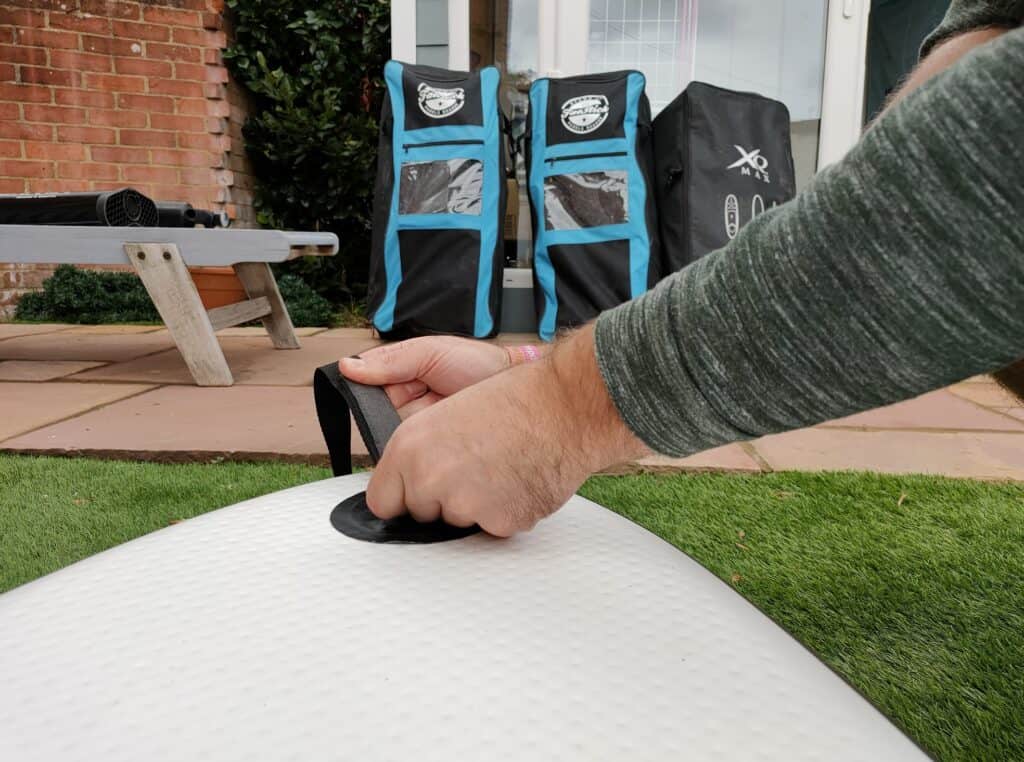
Give the leash a tug to make sure it is tight and that the velcro doesn’t start to separate.
What Are the Different Types of Leashes
If you are in the market for a new leash you may have done a bit of googling and seen that there are actually a couple of different leashes on available.
The two different types of leashes available are straight leashes and coiled leashes.
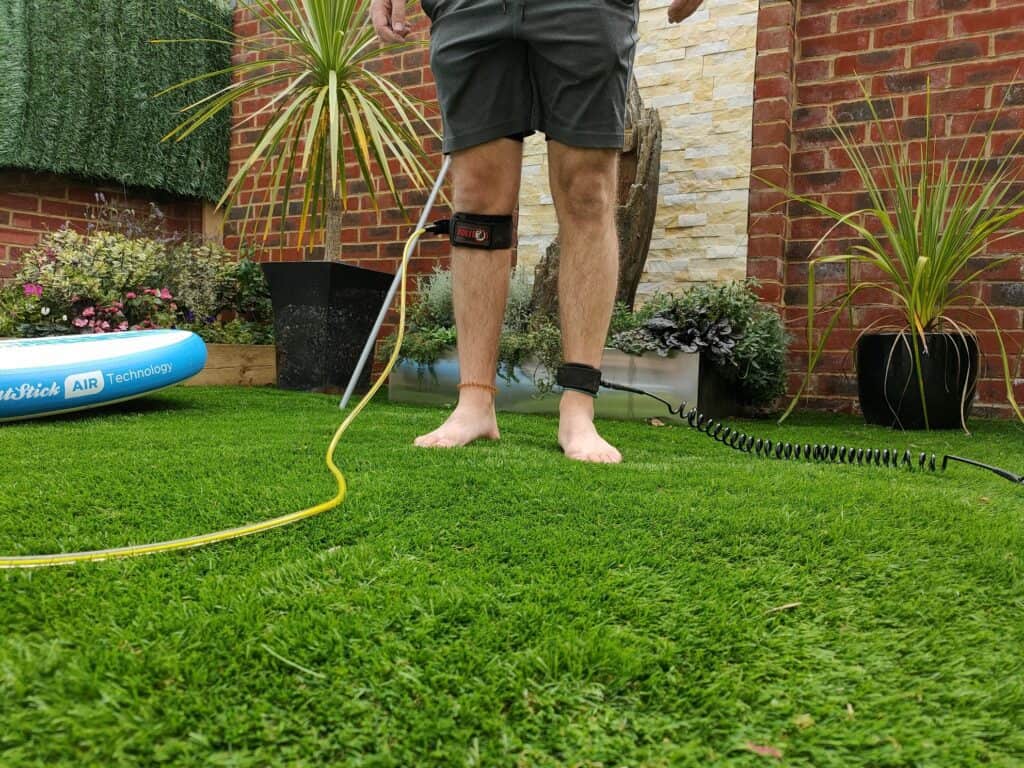
On top of the different types of leashes available there is also the additional choice of an Ankle leash and Knee/ Calf leash.
What’s The Difference Between a Knee Leash and an Ankle Leash
I’m sure from the names of these leashes you can probably guess where the cuffs of these leashes are each secured.
Knee Leash
Just in case you don’t piece the two together the Knee Leash (Sometimes known as a calf leash) is secured above the calf and just below the knee, the leash is kept up in place by the calf muscle.

The Knee leash, although not as comfortable and convenient is a fantastic choice for paddleboarders.
As the leash is secured higher up the leg it avoids the leash trailing on the board and tripping you up as you step up and down the board. The Knee leash is also less prone to getting tangled.
The main drawback to using a knee leash despite the fact it isn’t as comfortable is the extra effort required to kick your board back towards you when you fall off.
Ankle Leash
The Ankle leash is obviously secured around the ankle and is kept in place by the foot and calf.
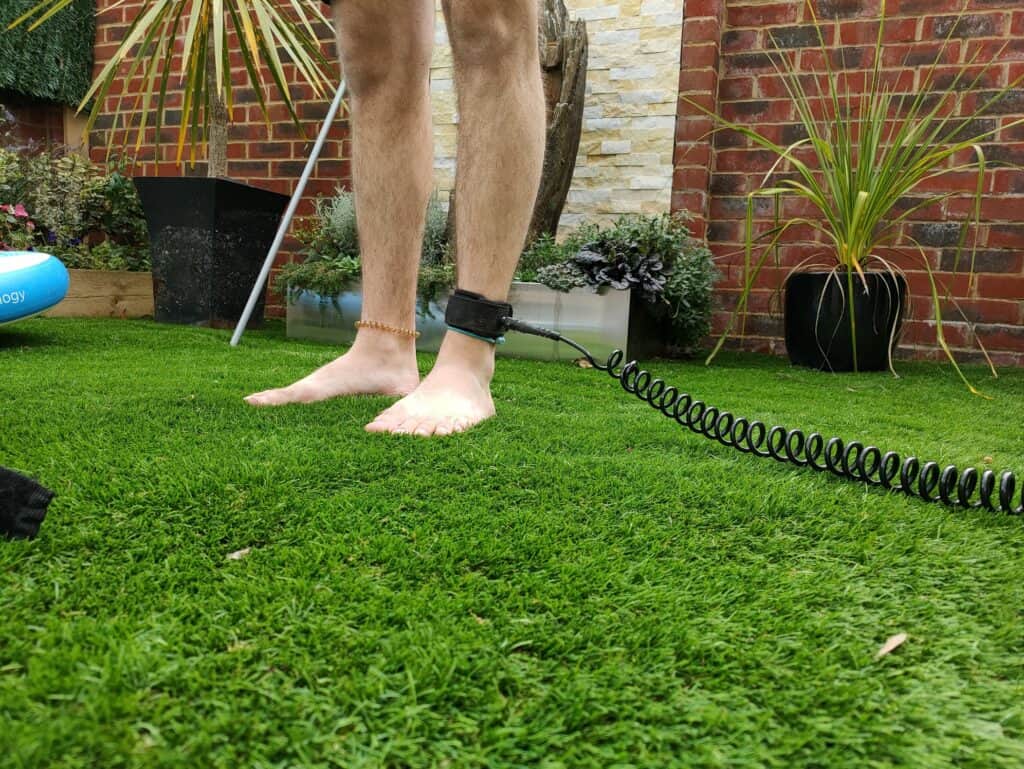
The ankle leash is the most comfortable and convenient leash and it is also the most readily available leash should you be in need of a replacement in a hurry.
Despite the fact the ankle leash causes more drag in the water and is more prone to tangling I still prefer ankle leashes over knee leashes.
There is also something we can do regarding the tangling which I will touch on next.
Coiled Leashes vs Straight Leashes
As I touched on above there are two different types of leashes, these being coiled and straight, both of these leashes have their specific uses and advantages depending on what type of paddleboarding you are doing.
Coiled Leashes
Coiled Leashes are better suited to paddling on flat water this includes things such as recreational paddling, SUP Racing and Sup Touring.
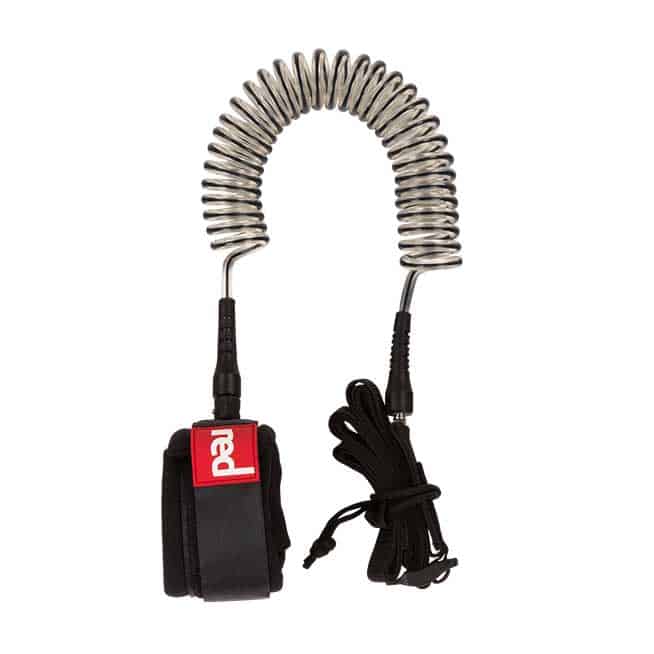
The reason the coiled leash is better suited to these tasks is because the coiled leash is much shorter and tends to rest on the board which means the leash doesn’t drop in the water and cause extra drag.
If you tend to do more flat water paddling I would suggest going for the coiled leash.
Straight Leash
The straight leash is more prone to tangling but it does have it uses over the coiled leash.
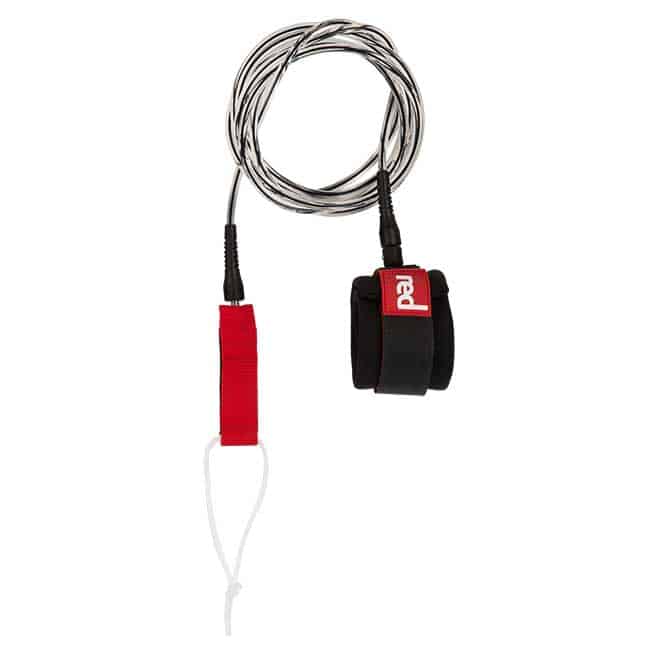
If you are into SUP Surfing like myself then the straight leash is often the better choice, the main reason for this is because the straight leash doesn’t have as much elasticity and therefore it is much easier and quicker to pull the board back towards yourself.
There is good a number of reasons as to why this is a benefit, the first reason is the safety of the others in the water, if you are on a wave and spot someone in the lineup in front of you, you may need to bail off the wave and get hold of the board quickly to ensure you don’t use your board as bowling bowl trying to knock down pins.
The second reason is for your safety and convenience, if you are catching a wave and ride it all the way to the inside you may want to get your board back quickly and get on your way before you get caught by the next set of waves.
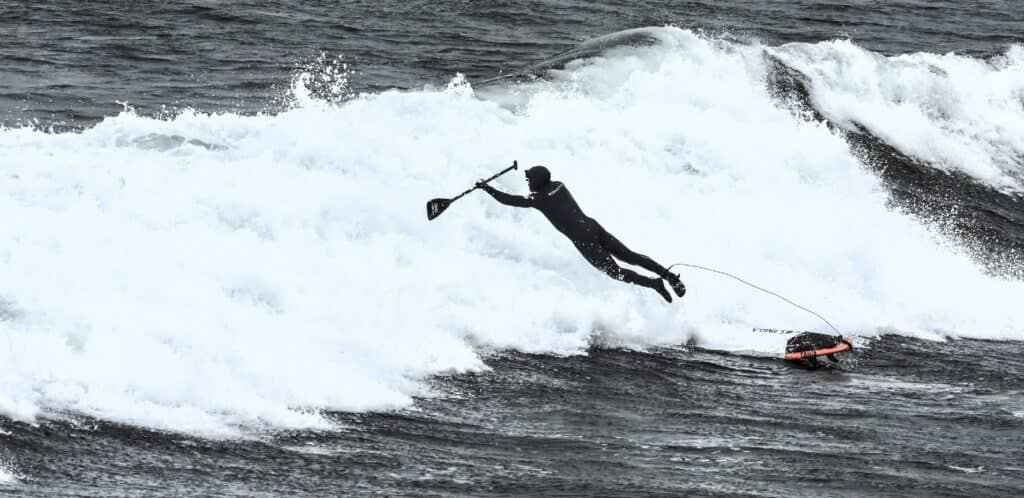
The straight leash allows you to kick the board back to yourself much easier and with much more force to save you or others around you.
Summary
So there you have it, you are now armed with everything you need to know.
Not only do you know exactly how to secure your leash to your paddleboard, you also now know exactly what leashes are available and which one you should probably choose to suit what you regularly do on your paddleboard.
Now get leashed up and get out there and have fun.
